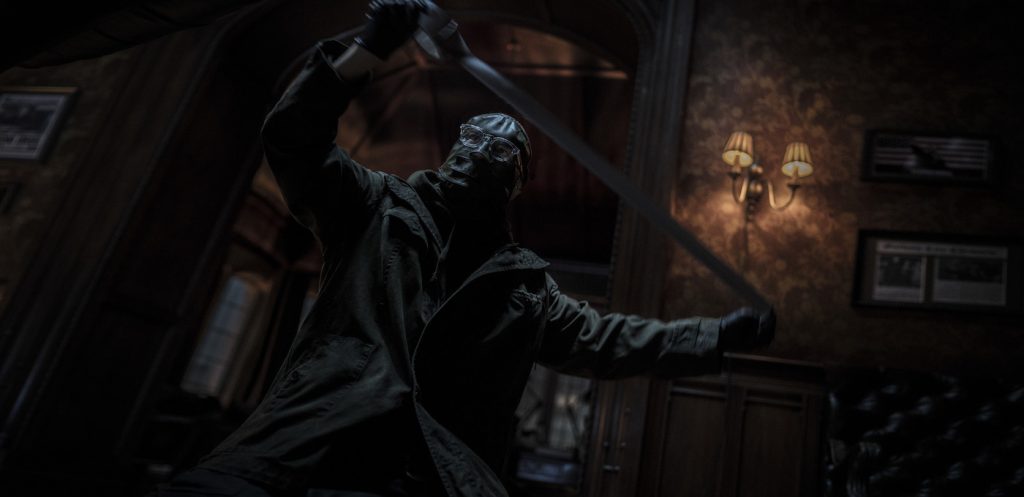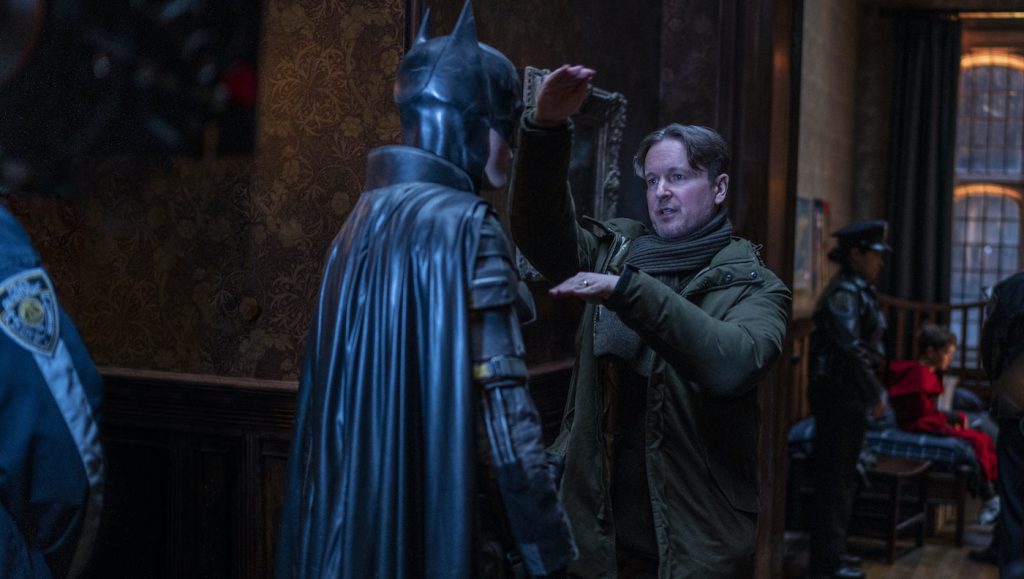How “The Batman” Writer/Director Matt Reeves Embraced Fear
“I think he has a really good understanding of fear,” Robert Pattinson says of The Batman writer/director Matt Reeves in this must-read profile of Reeves in Variety. “I think a lot of people try to bullshit themselves that they’re not afraid of anything. But Matt really acknowledges things that have scared him in his life and things that scare him presently, and can project those into his movies.”
Reeves had a lot of reason to be fearful when his passion project, a reboot of the Batman franchise, but told as a noir, street-level detective story, faced massive hurdles. For one, there was the pandemic, which sidelined Batman himself, Robert Pattinson, as they were only a quarter of the way into production in London. The Batman had already suffered a tragic loss—dialect coach Andrew Jack died at 76 in late March 2020 due to the coronavirus. Reeves told Variety he was sure Jack contracted the virus during the beginning of production.
Because The Batman was filming right at the start of the pandemic, before we had a grasp on what it was and exactly how it operated, Reeves went to extraordinary lengths to keep himself from contracting it. He knew that if he were to get it, the production might never recover. So, he tells Variety, he transformed himself into a human burrito, wearing a mask, a head covering, and scuba diving goggles (at the time, it was thought you could get the virus by touching your eyes). His appearance, he notes, was not dissimilar from Paul Dano’s look as the film’s villain, the Riddler.
“You couldn’t see my face, and this is the way the actors saw me for the rest of the movie,” Reeves tells Variety. “I was like this ridiculous, hermetically sealed creature. It was absurd.”

The pandemic forced Reeves to stay fairly isolated from his performers. Yet what ended up happening was it created a strange kind of intimacy between him and Pattison. In order to communicate with his star on a set with a ton of COVID-related barriers, the two communicated via earpieces and microphones.
“We were always directly connected, and it’s weird, because we were also physically distant,” Reeves tells Variety. “I could talk to him very low. I think we were in each other’s head. That had a particular effect.”
For Pattinson, it was also a revelation when Reeves accidentally left his mic on.
“You could hear his little reactions,” Pattinson says. “If it was a tense scene, you’d suddenly hear his breathing accelerate. Sometimes, it would be very, very distracting, but sometimes I actually quite enjoyed hearing his real-time reaction. I’ve never been so close to a director’s perception of what I was doing before. It’s a strangely intimate experience.”

Yet it wasn’t just the coronavirus that Reeves was concerned about. The writer/director was taking a big risk—as was Warner Bros.—by taking a very different approach to one of the most iconic superhero characters of them all. Reeves’ vision eschewed rebooting the franchise with an origin story, stripping down the Batman aesthetic to create a noir feel, and embracing many of the things he fears, and we fear, right now. One of the most intriguing things Reeves has imbued his reboot with is a massive disillusionment with institutions of power, and a Bruce Wayne who’s nearly as desperate and angry as the villains he’s chasing.
“His vigilantism is like filmmaking for me,” Reeves tells Variety. “The thing about being a kid is you feel so helpless. I felt so out of control, in so many ways.”
Reeves took control on The Batman, and his work, and that of his cast and crew, has resulted in the most critically acclaimed Batman film since Christopher Nolan’s The Dark Knight. Pattinson told Variety that Reeves’s approach is exacting, that he does a lot of takes (but minimal coverage) because he’s actually editing the film as he’s shooting it. Reeves’s approach to the action, especially the fighting, was for long takes, not a lot of cutting, so you can really see and feel the fear and rage.
“I related to his desperate attempt, I think, to try to find a way to reorder his life in the wake of something that was impossible to change,” Reeves tells Variety. “That’s the way in which I relate to Bruce’s mission. I think in the creative process, you can try to revisit your traumas. You’ll never change what happened, but you’ll change the meaning of them, and you’ll change your relationship to them.”
With the film opening wide on March 4, the rest of the world is prepped to see what it looks like when Reeves revisits his traumas via the most iconically tortured superhero of them all.
For more on The Batman, check out these stories:
The Best Batman Of Them All? “The Batman” vs “The Dark Knight”
“The Batman” Early Reactions: A Gripping, Glorious Street-Level Detective Story
You Can Recreate “The Batman” Logo For Yourself
Colin Farrell Went to Starbucks as the Penguin Unnoticed (And Ordered This…)
Featured image: Caption: (L-r) ROBERT PATTINSON and director MATT REEVES and on the set in Warner Bros. Pictures’ action adventure “THE BATMAN,” a Warner Bros. Pictures release. Photo Credit: Jonathan Olley/™ & © DC Comics



